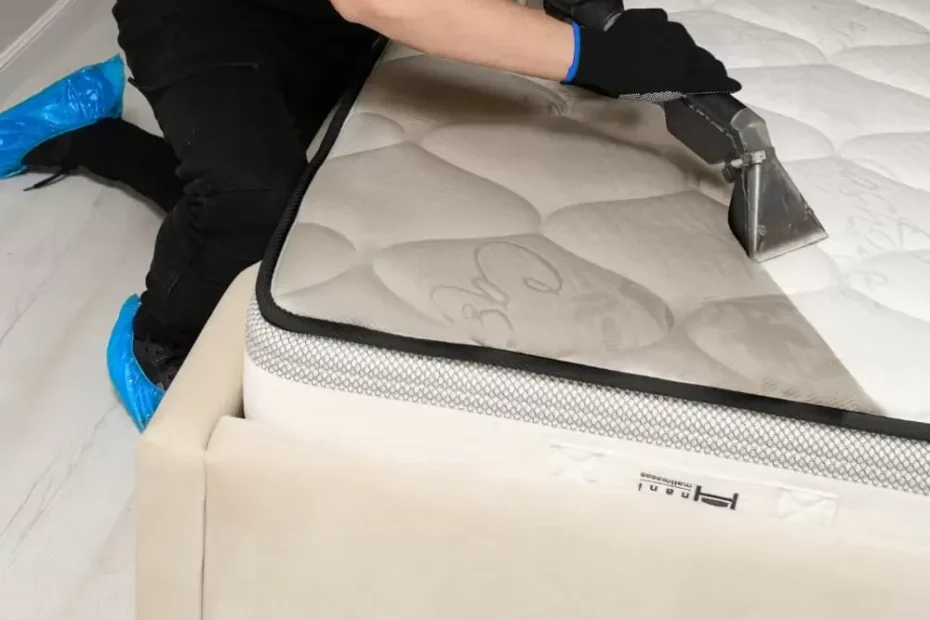Introduction: A good night’s sleep is essential for our overall well-being, and a key component of achieving that is having a comfortable mattress. However, mattresses are not designed to last forever. Over time, they accumulate wear and tear, impacting their performance and our sleep quality. In this comprehensive guide, we will explore the different types of mattresses, signs of wear and tear, average lifespan, tips for prolonging mattress life, and how professional mattress cleaning can help maintain your current mattress.
Types of Mattresses:
- Innerspring Mattresses: These mattresses use a system of metal coils for support and are known for their bouncy feel and excellent breathability.
- Memory Foam Mattresses: Made from viscoelastic foam, these mattresses conform to your body shape, providing exceptional pressure relief and motion isolation.
- Latex Mattresses: Constructed from natural or synthetic latex, these mattresses offer a responsive and durable sleeping surface while being resistant to allergens and dust mites.
- Hybrid Mattresses: Combining innerspring coils with memory foam or latex layers, hybrid mattresses provide a balance of support, comfort, and breathability.
Signs of Wear and Tear: Knowing when to replace your mattress is crucial to ensure optimal sleep quality. Look out for these signs of wear and tear:
- Sagging or Indentations: If your mattress develops noticeable depressions or sags where you sleep, it’s a clear sign of wear and loss of support.
- Lumps or Unevenness: Clumpy or uneven areas indicate that the internal components of the mattress are deteriorating.
- Excessive Wear on the Surface: Stains, tears, or frayed edges suggest that the mattress has reached the end of its lifespan.
- Persistent Discomfort: If you wake up feeling tired, achy, or experience increased pain, it may be a sign that your mattress is no longer providing adequate support.
Repair vs. Replacement: While some minor issues can be fixed, such as replacing a broken spring or patching a small tear, extensive damage or significant wear generally requires a replacement. Repairs may offer a temporary solution, but a compromised mattress can negatively impact your sleep quality and overall health.
Average Mattress Lifespan: The lifespan of a mattress varies depending on its type and quality. On average:
- Innerspring Mattresses: 7-10 years
- Memory Foam Mattresses: 8-12 years
- Latex Mattresses: 10-15 years
- Hybrid Mattresses: 8-12 years
Tips for Extending Mattress Life: To maximize the longevity of your mattress, follow these tips:
- Rotate and Flip: Regularly rotate your mattress to even out wear and tear. Some mattresses can be flipped as well, distributing the weight evenly across the surface.
- Use a Mattress Protector: Shield your mattress from spills, stains, and dust mites by using a waterproof and breathable mattress protector.
- Maintain Proper Support: Ensure your mattress is placed on a sturdy and supportive foundation to prevent premature sagging.
- Clean Regularly: Vacuum your mattress regularly to remove dust, allergens, and debris. Consider professional mattress cleaning, like the one offered by Tenancy.Cleaning, to deep clean and rejuvenate your mattress.
Professional Mattress Cleaning: Professional mattress cleaning services can significantly extend the life of your mattress while ensuring a clean and hygienic sleeping environment. Companies like Tenancy.Cleaning offer expert mattress cleaning that eliminates deep-seated dirt, stains, and odors, improving the overall quality and lifespan of your mattress.
While there is no set timeframe for when a mattress should be changed, being aware of the signs of wear and tear is essential. By investing in a high-quality mattress, practicing regular maintenance, and considering professional cleaning services, you can prolong
